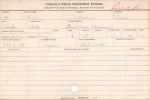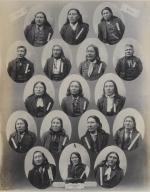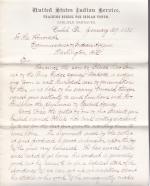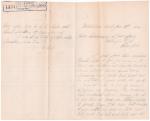Student information cards of Julia Iron Eagle Feather, a member of the Sioux Nation, who entered the school on October 6, 1879 and ultimately departed on June 14, 1887. The student did not attend the school continuously, but left and reentered.
Note: Julia appears to have been commonly known as Julia Good Voice, although that name does…




![Six Sioux chiefs with six male students [version 1], c.1890 Six Sioux chiefs with six male students [version 1], c.1890](/sites/default/files/styles/views_taxonomy/public/image-photo/NAA_73427.jpg?itok=uR3vCJJg)
![Six Sioux chiefs with six male students [version 2], c.1890 Six Sioux chiefs with six male students [version 2], c.1890](/sites/default/files/styles/views_taxonomy/public/image-photo/CCHS_PA-CH2_029C.jpg?itok=gVsGt7UN)


